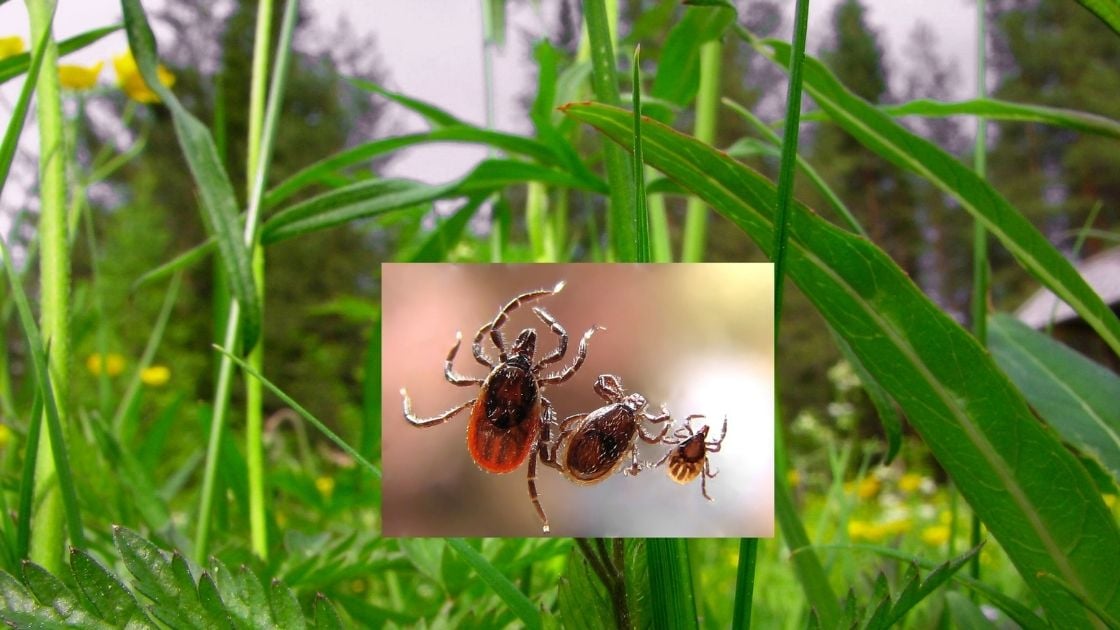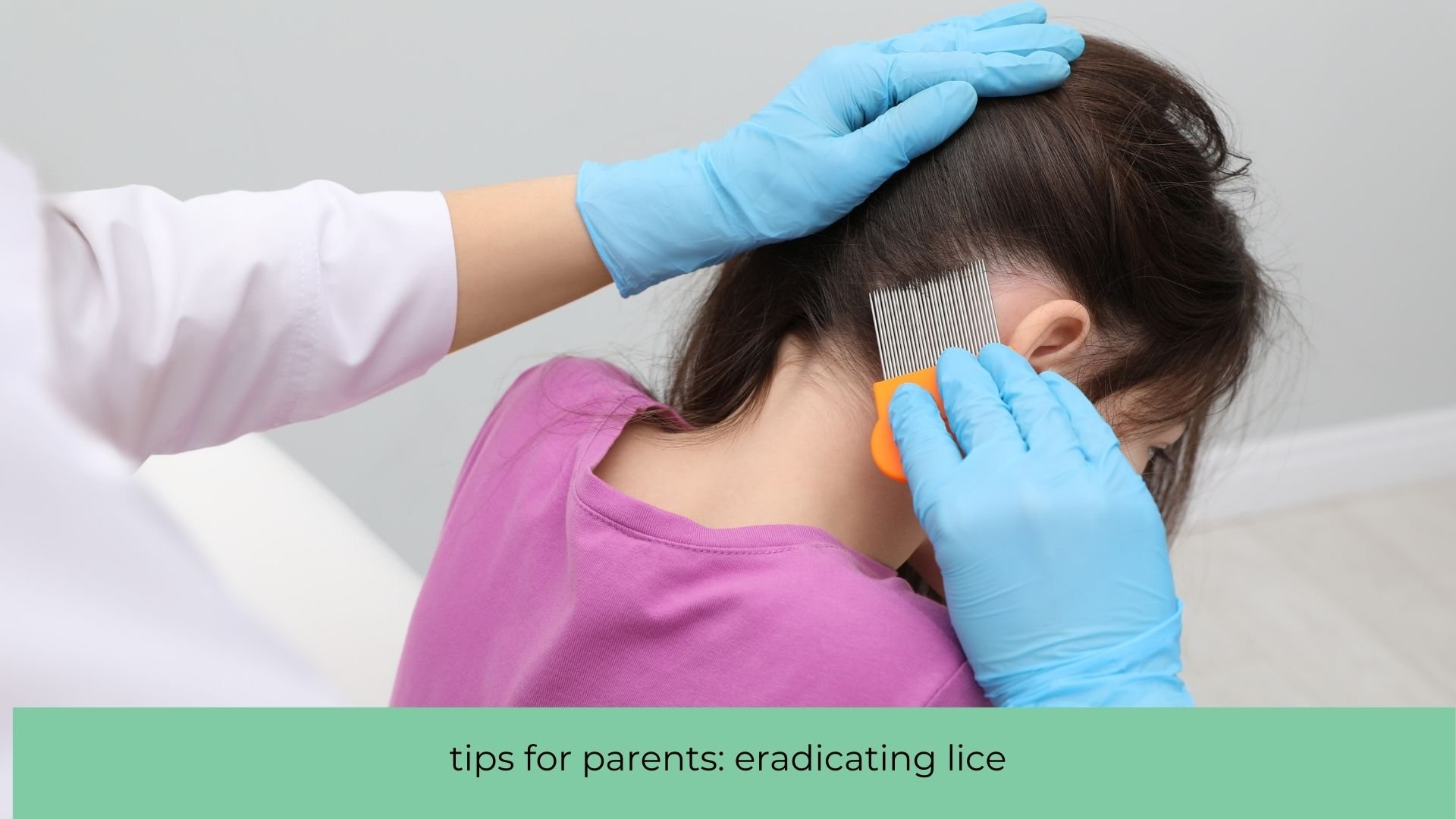There is nothing black and white about this mysterious and controversial diagnosis. If your child suffers sudden mention health problems following a case of strep throat, this autoimmune condition could be the cause.
Usually the dread that comes from your kid having strep throat is the extra-long Q-Tip swirl around the throat and tonsils — and its inevitable gag (and subsequent tears).
But if the culture pops up positive, you get a quick antibiotics prescription and your child is good as new in a matter of days.
Case closed, right?
Except for some kids, that’s not where it ends. Not by far.
Instead of life getting back to normal, a mysterious — often sudden — onset of seemingly unrelated psychological symptoms can begin.
In the case of 3-year-old Gracie Riverstone of St. Louis Park, it was extreme emotional distress that followed a strep diagnosis.
“I love my granddaughter so much — so it pains me to say this — but it was like The Exorcist, like dealing with a demon-possessed child,” said her grandmother, Faith Riverstone.
The behavior started after Gracie, then nearly 3, suffered what seemed to be a cold and sore throat around Thanksgiving. Shortly after her rebound, however, she developed a full-body rash that wouldn’t resolve.
Gracie’s then-doctor diagnosed her rash as a classic case of scarlet fever (due to the rash’s sandpaper-like feel). But he inexplicably told the Riverstones — Faith and Gracie’s mother, Katherine Riverstone — that it was a virus that would go away on its own and never mentioned its proven connection to strep. Scarlet fever is, in fact, a bacterial infection (not viral), which can lead to rheumatic fever and requires a treatment of antibiotics.
“I thought scarlet fever was a thing of the past,” Riverstone said. “He gave us the impression that it would clear up on its own in a few days, and to come back in a week or two if it didn’t. So we took him at his word. He left us feeling like idiots for being concerned at all.”
But Gracie’s rash persisted and she started pointing to her knees, saying she was in pain.
Gracie, who has autism, often remained stoic through discomfort, so the Riverstones were particularly concerned about this new development.
Their happy-go-lucky little girl was sick off and on and there seemed to be no explanation, even after four doctor visits.
Soon Gracie was struggling to walk because of the knee pain.
Not long after that — as though a switch had flipped — Gracie’s behavior radically changed.
“She became very panicked about the sun going down,” Faith Riverstone said. “She would say that if she fell asleep, she would die. I was thinking, ‘You’re 3! Who even gave you these words?’ She would tell me I had to make the sun came up or she would kill me. I kept asking myself, ‘Who is this hissing, spitting, growling, hitting, kicking, unhappy-looking, intense, angry and withdrawn child?’”
Sometimes Gracie’s violent rages would go all night because the Riverstones couldn’t make the sun come up.
Their doctor said, “This is autism.”
“And we were saying, ‘This is not the autism we had before,’” Riverstone said.
Meanwhile, plenty of other families — neurotypical and not — have been suffering with similar sets of symptoms after strep throat, including radically changed behavior, obsessions and compulsions, food avoidance, tics and/or regression in academic skills.
The suspected culprit?
PANDAS (Pediatric Autoimmune Neuropsychiatric Disorders Associated with Streptococcal Infections), a term coined in a 1994 paper by Dr. Susan Swedo at the National Institute of Mental Health, after she discovered an apparent link between abrupt-onset obsessive-compulsive disorder and group A streptococcus.
A new diagnosis
The diagnostic criteria for PANDAS — which has affected not just Gracie, but also many other Minnesota families — include sudden-onset OCD or severely restricted food intake in combination with at least two of the following symptoms:
- anxiety;
- involuntary laughing or crying;
- irritability or aggression;
- behavioral regression;
- ADHD-like symptoms that cause a deterioration in school performance;
- sensory or motor abnormalities;
- somatic symptoms such as sleep disturbances and frequent urination.
The condition is called PANS when there’s no positive strep culture, and could be attributed to an otherwise cleared strep infection, a tick bite or other health event.
Also, symptoms can’t be better explained by a known neurological or medical disorder, such as Sydenham’s chorea, systemic lupus erythematosus or Tourette syndrome.
PANDAS symptoms typically begin four to six weeks after strep.
An unrecognized condition
Though that might sound like a fairly clear-cut definition, PANDAS/PANS isn’t fully recognized by the American Academy of Pediatrics on the grounds that not enough research has been done.
The Mayo Clinic’s public page on strep throat describes the relationship between strep and neuropsychiatric conditions as “possible,” “unproved” and “controversial.”
Because the sets of PANDAS symptoms can be so diverse — and because these symptoms can sometimes be attributed to so many other conditions — diagnosing and treating it isn’t simple.
Some physicians won’t treat for PANDAS because they fear lengthy rounds of antibiotics can have negative side effects, such as compromised gut health for the child and antibiotic resistance for society as a whole. They say behavioral abnormalities can be coincidental — or parents may be coming around from a period of denial — and that they may not necessarily be triggered by infection.
But PANDAS researchers say the condition is real and happens when strep bacteria inadvertently cause the body to produce an autoimmune response that attacks healthy cells in the body, including the brain — versus attacking the strep bacteria, which have the ability to not only mimic other cells, but also the ability to hide in the body.
PANDAS, according to researchers, causes inflammation within the basal ganglia, a portion of the brain responsible for speech, involuntary movement (tics) and emotion.
Swedo put it this way in a recent episode of 20/20: “In its simplest form, the wrong strep in the wrong kid impacts the brain and gives rise to behavioral symptoms.”
Strep is incredibly common: The NIH estimates that the average grade-school student will have one to three strep throat infections each year. Swedo characterizes PANDAS as “a medical lightning strike” that affects as many as 1 in 200 children.
According to the NIH, PANDAS is considered a pediatric disorder that typically appears from age 3 to puberty. Reactions to strep infections after age 12 are possible but rare, due to improved immunity in older kids. It’s still unknown if PANDAS is something kids can outgrow or recover from completely.
Doctors who believe
In cases where PANDAS is suspected, the first line of treatment is making sure the strep bacterial infection is fully treated and that future infections are diagnosed and treated in the child — and within the family — immediately.
Treatments vary as much as the cases do, ranging from courses of antibiotics to combat the strep to plasmapheresis (a cleaning of the blood’s plasma in a process similar to dialysis) and intravenous immunoglobulin (IVIG), an IV-delivered dose of antibodies.
Despite the fact that the diagnosis and treatments are increasingly common, parents are still struggling to be heard and have their children’s health crises legitimized in their pediatricians’ offices and by their insurance companies.
PANDAS is devastating families, bankrupting them both emotionally and financially, sometimes for years, said Stephanie Belseth, a nurse practitioner at Newbridge Clinic in Edina who has become a local PANDAS expert and go-to authority on the condition.
“Families’ lives have been torn apart,” Belseth said. “I took an oath to do no harm and by not treating this person, that’s harm. It can be difficult, though, when you are treating something against the grain.”
Dr. Katie Klingberg, a family practice physician with Fairview in St. Paul’s Highland Park neighborhood, has been moved to go against the grain as well after encountering families desperate to help their children through unexplained extreme trauma.
She believes PANDAS is real and has connected families to specialists such as Belseth and others who can get them the help they need.
“In medicine, we really like algorithms: You have this, and then we do this, and then it’s treated. As scientists and physicians, we are perfectionistic,” she said. “But this has too many variables. It makes us uncomfortable when we can’t figure something out. It’s a failure to us. These kids are pioneers to PANDAS right now and we have to support them.”
Belseth said she’s seeing big improvements among her patients, whether they’re considered PANDAS “lite” or facing near catatonia.
She said many children are misdiagnosed with straight-up OCD, anxiety or tics only to find out that a simple antibiotic treatment of a strep infection may relieve their symptoms.
Diagnosing and treating PANDAS sooner rather than later is important, she said.
“We see rapid improvement earlier in the trajectory of illness. The longer you’ve had it, the more damage can happen, as your neuronal tissues and receptors are targeted by antibodies,” she said. “The longer the attack, the harder it is to reverse it.”
The other tricky thing about PANDAS is that while a strep infection typically triggers symptoms, kids with PANDAS can easily have recurrent symptom exacerbations (flares) later in the disease when exposed to other (non-strep) infections, creating a mysterious cycle that only confuses matters. Kids seem normal for weeks and then, symptoms come back.
When treating patients with PANDAS, Belseth uses a variety of approaches, including traditional Western antibiotics, vitamins, herbal antifungal and antimicrobial supplements and special diets.
Belseth’s perspective as a functional medicine practitioner gives her an edge, she said, because she looks to treat the whole person and the root causes of problems, rather than treating only the symptoms she can see.
Additionally, she focuses her treatment on strengthening the gut microbiome and the blood-brain barrier, which she believes are both “leaky” in PANDAS cases.
Many patients do their general care with Belseth and go elsewhere for IVIG or plasmapheresis.

Getting back to normal
The Riverstones said a simple treatment of antibiotics brought their sweet Gracie “back” almost overnight.
After three months of living with a scarlet fever diagnosis and worsening symptoms for Gracie, they desperately took her to Dr. Klingberg, who immediately diagnosed Gracie with strep and PANDAS and put her twice-daily amoxicillin.
“After two to three days, she was back to her old self and then some,” Katherine Riverstone said. “We were just so grateful someone actually was able to help her and we weren’t all alone in this anymore. It was a night-and-day difference.”
Gracie stopped showing signs of pain in her knees and started to regain her motor skills. Her speech returned, too, and with it leaps in her development, including her use of language and even new critical thinking skills. Suddenly, she was able to listen to reason (even during meltdowns) and her nighttime terrors disappeared as well.
“When she got sick and her behaviors changed — which felt like overnight — our lives just stopped,” Faith Riverstone said. “We could not take her in public; we couldn’t leave the house. She wasn’t sleeping. She wasn’t eating. No amount of trying to work with her did anything. Had we been in services for her autism at that point, I’m sure they would have had her admitted — or arrested if she were older. Nobody is equipped to deal with what we were dealing with.”
Today, newly turned 4, Gracie is still undergoing antibiotic treatments.
“We do not know how long Gracie will be on antibiotics,” Faith Riverstone said. “Only that whenever we try to taper them, the symptoms come back.”
For now, however, Gracie’s mother and very involved grandmother are just happy to see their still-autistic — but also remarkably extroverted — kid smile, laugh and feel her trademark joy.
“I can see Gracie,” Faith Riverstone said. “With all hope, Gracie is the last child in the Twin Cities this happens to.”

A star student
Jonell Hathaway Jones of Golden Valley thinks her son’s PANDAS began in second grade. But it wasn’t until he was in the fifth grade that his symptoms became completely unmanageable.
Originally treated for ADHD as a younger child, Malcolm began exhibiting signs of extreme separation anxiety at age 10, begging his mother to sit in class all day with him.
Once a top student who regularly tested ahead of his grade level, his handwriting became illegible. His math skills, reaching into high school territory, disappeared, leaving him unable to do simple addition.
“It happened very fast,” Hathaway Jones said. “It really baffled me. Here was a kid I never had to worry about with academics, and all of a sudden, he was starting to lose the ability to function. The school started calling, saying that he was yelling swear words. I was thinking, ‘What in the world?’”
Shortly after that, Malcolm stopped speaking.
“I pulled him out of school,” Hathaway Jones said.
They began visiting Malcolm’s doc nearly daily as his ability to function hit rock bottom. She mentioned PANDAS to his physicians, but Malcolm’s bloodwork didn’t reveal anything useful. An ER visit landed him in the hospital due to his behavioral health issues. Doctors suggested antipsychotic medications.
Hathaway Jones started researching online. With some leftover antibiotics, Advil and desperation, she dosed her son.
Not long after trying the antibiotics, her nonverbal son looked up at her and said, “Mom, there’s something wrong with my brain.”
After that, Hathaway Jones found Belseth, a local support group (PANS/PANDAS Support of Minnesota) and finally PANDAS treatments for her son.
Today at age 13, Malcolm has come a long way thanks to a variety of treatments, including hydroxyzine, which helps with anxiety and inflammation, and IVIG.
After years of struggle, Malcolm has been able to recover to the point where he is in school full days.
“He’s back into being able to write some and do math. We haven’t had a full recovery, but we’re holding at about 85 percent, which is doable,” Hathaway Jones said. “He’s a great kid. He tries so hard every single day. I think until they develop better normal treatments, this might be his new normal.”

A tougher case
One of Klingberg’s other patients, Parker Barnes of Prior Lake, has a severe case of PANDAS. He was recently featured on the news show 20/20 with his family, including his parents, Brian and Natalie Barnes.
Their son, a brilliant, organized, socially thriving kid — the oldest of the family’s four children — also happened to get an unlucky break with strep throat.
“This was a healthy, happy-go-lucky, totally normal kid,” Natalie Barnes said. “He never had a social issue, and was at the top of his class. He was the rock of all rocks. The Abraham Lincoln. We called him Lead Dog for a reason.”
Parker, who had a history of recurring strep, was diagnosed with yet again strep when he was 10 in January 2017.
Not long after, a tiny tic emerged: He kept clearing his throat over and over and over again.
Parker tested positive for strep again in February and March.
Each time doctors did a full round of antibiotics.
“Every time it came back,” Brian Barnes said. “It was just always in the family somewhere.”
In February 2017, Parker’s mysterious mental-health symptoms started with what the Barnes family called “the mopies.”
“He would stop what he was doing and sulk. He would stop what he was doing and cry,” Brian Barnes said. “It was just so bizarre. It would come and go without warning or reason why.”
Soon school called to say Parker was no longer playing with his friends. He began to lose his ability to write and also lost one of his favorite daily activities — drawing.
His moods, which grew ever more extreme, would come and go quickly, making getting a diagnosis even more difficult.
His parents began filming his episodes — seizures, panic attacks, hallucinations, obsessive-compulsive behaviors.
One morning in April 2017 — when things seemed fine minutes before — the Barnes family found Parker with a steak knife, threatening to harm himself.
The eight-day visit to the psych ward that followed did nothing but traumatize the entire family and send their boy back home, presenting the same symptoms.
During that stay, a baffled psychiatrist suggested they look into a condition called PANDAS.
When Parker’s parents read about the condition, it sounded spot on, so they tried antibiotics.
But antibiotics — which Parker is still taking almost two years later — didn’t fully resolve his condition. Even with helpful treatments, he’s suffered long bouts of depression, and periods of not speaking and resisting food.
The Barnes family has tried everything to help Parker, including a three-day extensive period of testing at the Mayo Clinic, which yielded no diagnosis or treatment plan. They’ve also taken him to see a slew of specialists, including psychiatrists, immunologists and neurologists.
Natalie Barnes, an ER and ICU nurse, has spoken at medical conferences about her son’s PANDAS while also championing his health care. She and her husband are also challenging the Minnesota legislature to require insurance companies to cover PANDAS treatments, including IVIG (which can costs more than $10,000 per treatment), plasmapheresis (pictured above) and Rituximab, a drug used for patients with cancer, rheumatoid arthritis and autoimmune encephalitis.
The problem is that PANDAS just isn’t recognized by the broader medical community, Brian Barnes said.
“It’s dismissed as being a psychiatric condition,” rather than an autoimmune condition, he said, saying most practitioners they’ve met devolve into “eye rolling, sighs and dismissive shrugs” when they bring up PANDAS.
Natalie Barnes, meanwhile, relying on nothing more than her own grit and determination, was able to get some of Parker’s treatments — including plasmapheresis and IVIG — covered by insurance, at least for a limited time.
That’s a good thing. Because Parker’s treatment is ongoing.
In fact, earlier this year, after he was exposed to the flu and lost three teeth, many of the gains he’d made slipped away and his most severe symptoms returned. (Even the smallest amount of bacteria in his bloodstream can make Parker’s symptoms flare, Natalie Barnes said.)
The Barnes family has been traveling the country to get care for Parker, including help from Dr. Souhel Najjar, known for his starring role in Susannah Cahalan’s book, Brain on Fire. Though he treats mostly adult encephalitis, Najjar agreed to work on Parker’s case.
“Don’t be afraid if a doctor tells you no,” Natalie Barnes said. “Have a Plan A, B, C, D, E. Go through as many alphabet letters as you need. Always have another plan in your back pocket.”
At the time of this writing, Parker was undergoing treatment with high doses of intravenous steroids, IVIG and Rituximab, a drug that’s promising, but may take weeks to bring healing, followed by a longer road back to full health. “It will take about 18 to 24 months to recover, but I expect he will fully recover,” Natalie Barnes said.
At this point, Barnes isn’t so much angry as she is grieving.
“The hardest thing for me is that at 12, he has lost years of his life. I don’t have my son back. I see other kids his age getting together for overnights, and my kid sits at home, barely able to function. That breaks my heart,” she said. “But I won’t stop until he’s better.”
Brian Barnes would like to see doctors tell parents after a strep diagnosis: “If anything weird shows up, psychiatrically, let us know.”
He also noted that parents should be on the lookout for mental health symptoms triggered by non-strep infections, also known as PANS.
“PANS is similar and can include a number of triggers like the flu, Lyme disease or any other large infection that can give you a fever,” Brian Barnes said. “The trigger, in my opinion, is not as important as the pathology. Parents need to be aware of the early signs and screen for this rather than having their kid tossed to a psych doc and dosed with a bucket of pills that wind up making things worse.”

The future of PANDAS
Parents nationwide have banded together with a variety of PANDAS support groups, in person and online.
Wendy Nawara, a former social worker who founded the Illinois-based organization PANS/PANDAS Advocacy and Support, has three kids of her own with PANDAS, in varying degrees of severity and/or remission.
“We need this to be as commonly accepted as an ear infection is,” Nawara said. “It’s unconscionable for a child to present in a doctor’s office or ER or Minute Clinic with this cluster of symptoms and for the physician to say, ‘I don’t know what this is and therefore it doesn’t exist.’ It happens so much. It happened to us.”
Nawara is nevertheless optimistic about future treatment. She and her son, Charlie, were the catalysts for Charlie’s Law, passed in Illinois in 2017, which requires insurance companies to cover medical treatment for PANDAS, including IVIG. Other parents are trying to pass similar laws in their states.
Those parent advocates include Brian and Natalie Barnes, who are pushing a Minnesota bill that appears to have bipartisan support, maybe enough to pass this coming session.
“Mark my words: There will be a change in the next five years in national coverage,” Barnes said.
Nawara hopes to change the outcomes for hundreds of thousands of families. “We are the cusp of wave,” she said. “We are at the very top where the foamy stuff starts, you know what I mean? It’s going to crash down very soon.”
Resources
PANS/PANDAS Support of Minnesota – Get local support and information — in person and online — about PANS/PANDAS. pandassupportmn.org
PANDAS Network – This group collaborates with experts, raises awareness, supports families and gathers and shares data to inform parents and healthcare practitioners. pandasnetwork.org
PANDAS Physicians Network – Read clinical explanations of PANDAS geared toward parents and pediatricians. pandasppn.org
PANS/PANDAS Treatment Guidelines – This page links to peer-reviewed journal articles for practitioners with advice on psychiatric and behavioral interventions, treatment and prevention of infections and immune-system therapies. tinyurl.com/pandas-for-docs
Institute of Functional Medicine – Learn more about functional medicine. ifm.org
OCD – The International OCD Foundation has a sheet comparing pediatric OCD and PANDAS. tinyurl.com/ocd-pandas
NIH – Learn about PANDAS diagnosis, treatment, clinical trials and more from the National Institute of Mental Health, a component of the U.S. Department of Health and Human Services. tinyurl.com/nih-pandas
MAPS – Parents of special needs kids can use this site to get connected to top practitioners in the field. medmaps.org
Moleculera Labs – The Cunningham Panel — a special test that tracks infection-induced autoimmune disorders — may be the key to identifying PANDAS. tinyurl.com/pandas-panel
20/20 – Watch a gritty story about what it can be like to live with PANDAS, including appearances by a family from Prior Lake, Minnesota. tinyurl.com/20-20-pandas
Treating Strep
Strep throat can go away — with or without antibiotic treatment — in about a week.
However, if strep throat isn’t treated thoroughly with antibiotics, the person can remain contagious for two to three weeks — and there’s a higher risk for complications such as scarlet fever, rheumatic fever and possibly
PANDAS.
To make matters more complicated, not all people with strep suffer its typical symptoms of sore throat, headache and fever (usually without a cough and occasionally with abdominal pain). And some can be otherwise-healthy strep carriers.
Learn from the CDC what strep throat is and how it’s diagnosed and treated at tinyurl.com/cdc-strep.
Katie Dohman is a freelance writer and mother of three who lives in West St. Paul.






















